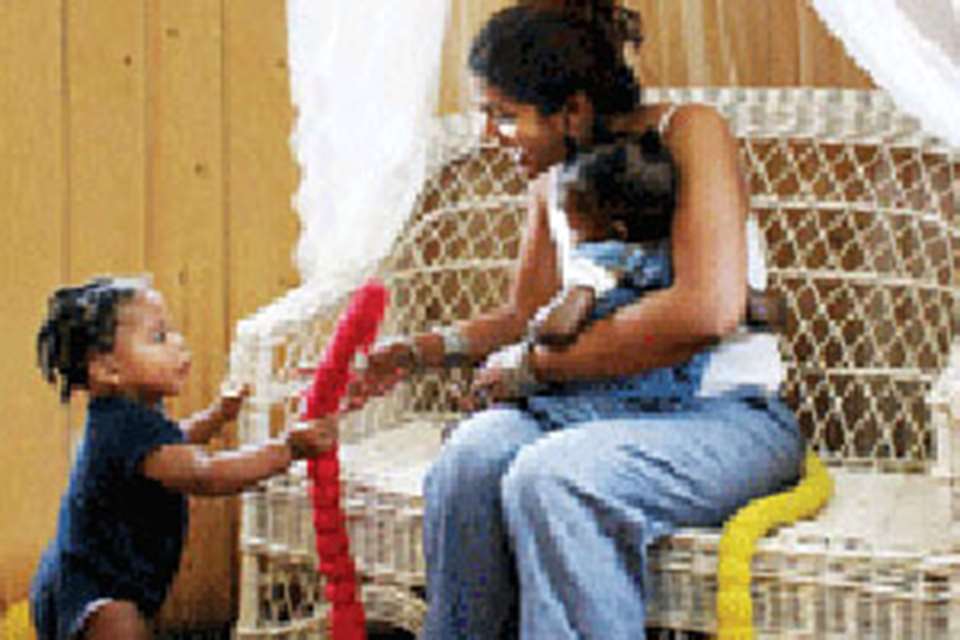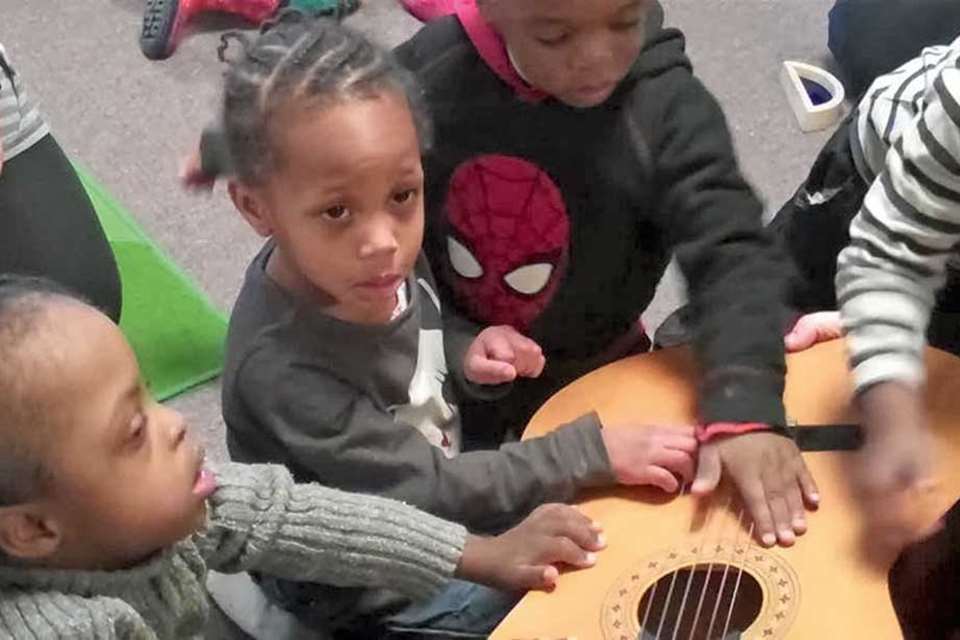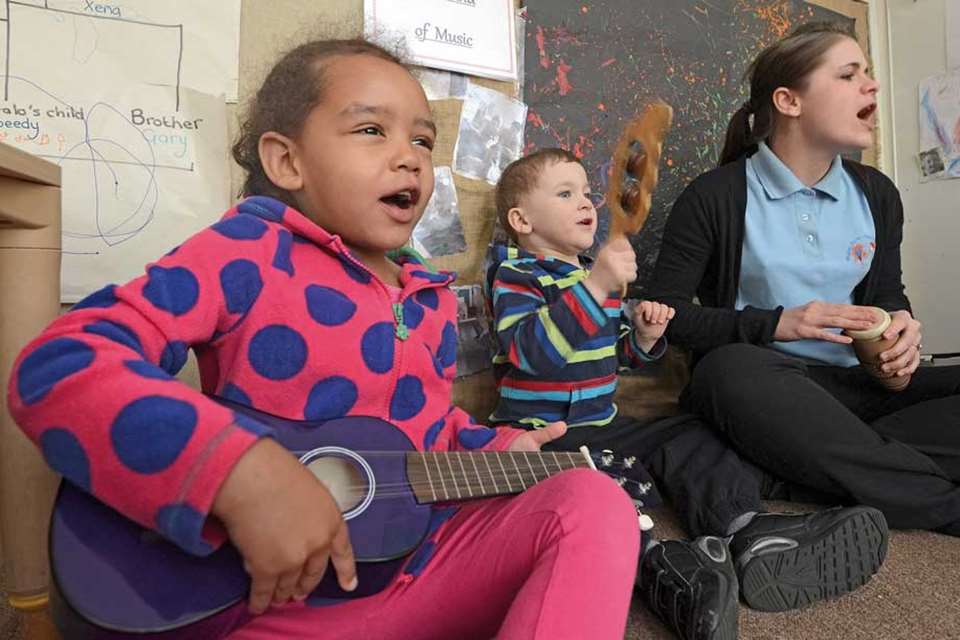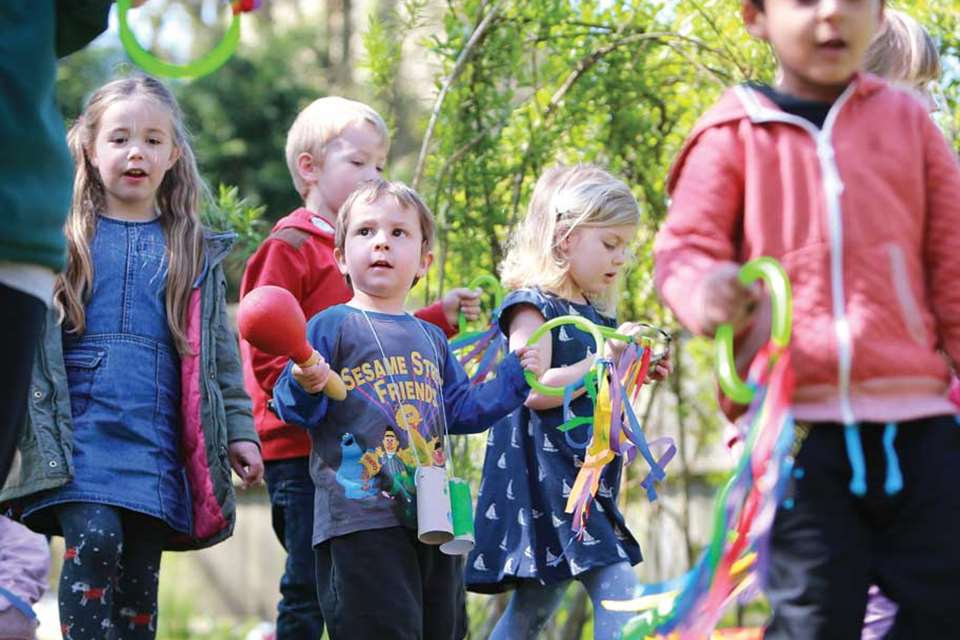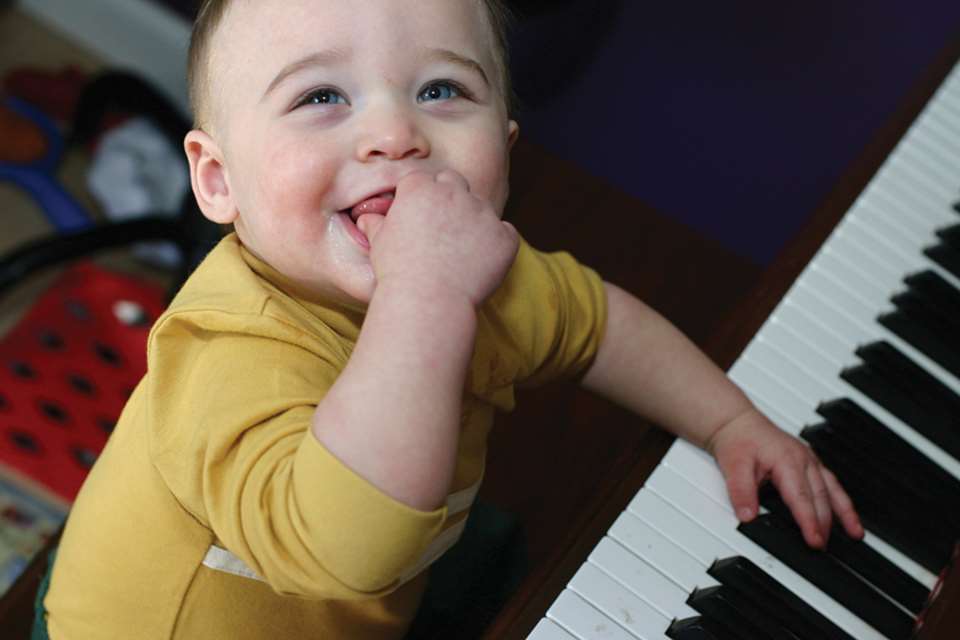Learning & Development: Music - Be still
Vanessa Young
Monday, July 13, 2015
The Babysong Project has been looking at how singing and song can establish intimacy between practitioners and babies. Vanessa Young explains

As I enter the nursery, the first thing I hear is a song: educator Kerryn is rocking baby Ivan...and crooning in Chinese (his native language). They look into each other's eyes and I notice the baby's intense gaze at Kerryn's face. Her voice and body language convey the qualities of infant directed singing and Ivan relaxes to the soothing melody and slow tempo of a lullaby.' (Niland, 2014)
This scenario perfectly illustrates the aim of our Babysong Project: to establish the nature and place of intimacy between early years practitioners and the babies in their care through singing and song. The project team worked with practitioners with responsibility for the very youngest children in daycare settings to achieve this.
The Babysong Project emerged from the Baby Room Project, based at Canterbury Christ Church University. The development of the project was underpinned by previous research by Kathy Goouch and Sacha Powell as well as the work of other researchers such as Sandra Trehub, Amanda Niland and Colwyn Trevarthen, all of whom have demonstrated the benefits of singing with babies for well-being and close engagement.
To establish a framework for our initiative, we turned to the Limerick Lullaby Project (Carolan et al, 2012), which considered the benefits of mothers singing with their babies while in utero, and when newly born. This research suggested that singing lullabies benefited the mothers in four distinct ways:
- it enabled them to feel closer to their infants
lit developed their confidence with their babies
- it enabled them to make connections with others, and
- it provided them with an additional tool for communication post-birth.
We adapted these findings to create a 'Four Cs' framework for our own project and explored how singing and song can promote each, so:
- we looked at the importance of participants making 'Connections' with babies, other professionals, parents, the babies' cultures, memories and so on
- we explored how meaningful 'Communication' could take place between participants and their babies, babies' parents or carers and adults in the baby room
- we were keen for participants to consider the value of 'Closeness' to babies in intimate encounters
- we wanted to develop 'Confidence', of both participants and the babies in their care.
Taking part in the project were early years practitioners from East Kent and during the project we held a number of professional development sessions, visited the participants in their nurseries and communicated with them through our NING (a private online social networking site).
VOCAL SPECTRUM
We chose to think of 'singing' and 'song' in their broadest conceptions and created a working Spectrum of Vocal Utterances. The focus of our explorations essentially moved through what could be called 'ordinary' speech to 'motherese', or infant-directed speech - that simplified and repetitive type of speech with exaggerated intonation and rhythm, that adults often use when speaking to babies (or pets!).
We considered any sounds that can be made with the human voice ('vocalisations') and the extended rhythmic and melodic phrasing that characterises 'singese' (Dionyssiou, 2009). 'Formal' songs - those that we learn from our culture or that we 'acquire' as finished 'products' - form an essential part of our regular repertoire, but for the purposes of the project, we were particularly interested in the middle components of this spectrum.
At its most straightforward, a child who complains about a stone in their shoe, for example, could be distracted by a quickly improvised chant: 'Ooh, aah! I've got a stone in my shoe, a stone in my shoe, a stone in my shoe. Oh no! I've got a stone in my shoe and I don't know what to do! Ouch!' More subtly, perhaps, when a baby yawns, the downward sliding pitch of the yawn can be imitated, manipulated and 'played with' in a reciprocal way to create a musical dialogue between carer and baby.
To boost practitioners' skills in spontaneous vocalisation and song-making, we incorporated practical workshops into our sessions then encouraged participants to apply their learning in their own settings.
REPERTOIRE
A key consideration during the project was practitioners' choice and application of 'repertoire' (improvised or formal) as, perhaps surprisingly, even very young babies can have strong musical preferences. In one powerful video clip, a baby's smiles at Incy Wincy Spider quickly turn to wails when her mother switches to Lady in Red. Sixto seven-month-old babies, for example, prefer low-pitched to high-pitched renditions of lullabies.
Different kinds of songs produce different behavioural responses: 'play songs' direct attention outwards to the caregiver, whereas 'lullabies' direct attention inwards (Rock et al in Tsang and Conrad, 2009) - an important characteristic in encouraging 'closeness'. Play songs are more likely to be fast, high-pitched and loud (or have sharp variations in dynamics), whereas lullabies tend to be slow, low-pitched and quiet.
Infants are highly sensitive to the emotional message contained in songs, not only in terms of their musical content but in the way that they are sung - a slow tempo and loving tone of voice usually convey soothing or comforting messages, whereas fast, clipped utterances can express excitement, fear or surprise (Tsang and Conrad, 2009).
Given the importance of repertoire, we asked participants to collate the songs that they commonly used in their baby rooms. Their collections were huge but contained very few lullabies - echoing previous Baby Room Project research that found that less than 1 per cent of songs used by practitioners were obviously lullabies (Powell, Goouch and Werth, 2013).
Consequently, we went on to discuss the value of stillness and singing to soothe babies. Through these discussions, various issues emerged. Participants talked about:
- the difficulties of justifying 'stillness'
- the need to 'jolly up' babies and to 'look lively'
- finding it 'hard to find the moments'
- the pressure to 'keep busy' and to be seen to be so.
Busyness and activity are apparently an overt sign and presumption of 'hard work', but they are factors that compromise stillness and closeness. One manager acknowledged that there were Ofsted expectations that every child should appear to be 'engaged' at all times, raising questions about what it means for babies to be engaged, and how we know when they are.
To redress this apparent imbalance in repertoire, I chose to concentrate on sharing lullabies, including some from other cultures (that is, not English-language dependent). One was Ho Ho Wataney - an Iroquois lullaby which, without any preamble, we sang as a call and response.
Although they did not understand the words, all the practitioners guessed the song related to babies sleeping, or being lulled to sleep. Furthermore, they identified the key features that made it lullaby-like: quiet, slow, sung with a soothing voice, repeated word lines, and so on. This demonstrated to them their intuitive musical understanding of 'how lullabies go', and their 'tacit knowledge' (Polanyi, 1968, in Swanwick, 1988).
With this greater understanding of the features of a lullaby, we then asked participants to work in small groups to turn a play song into a lullaby and vice versa - for example, making Hickory Dickory Dock into a lullaby without changing the words.
This exercise clearly demonstrated that any song can be adapted, played with, fragmented, and that it is not so much the song itself, but the way that it is sung that makes it a lullaby or a play song.
This was an important dimension of the project and encouraged the participants to take liberties with the musical materials of song; to adapt them, spontaneously to the situation and the needs of the babies.
We are still working with our participants, but feel they now have a growing confidence to look for and take opportunities to create quiet times, 'lullaby moments' (and not just at sleep times), directing attention inwards without feeling the pressure to entertain or perform.
Of course, embedding this approach in their everyday practice requires support and sometimes a change to the prevailing culture of the baby room. Our participants have been working hard to cascade everything that they have learned and the next stage is to collaboratively develop a professional development resource.'
Vanessa Young is principal lecturer in education at Canterbury Christ Church University
MORE INFORMATION
- The 6th Annual Baby Room Conference: Babysong will be held on 17 July in Margate, Kent. See www.canterbury.ac.uk/education/conferences-events
- 'Does the message matter? The effects of song types on infants' pitch preferences of lullabies and playsongs' by CG Tsang and NJ Conrad, in Infant Behaviour and Development
- 'Encouraging musical communication between babies and parents: report of a case study from Corfu' by Z Dionyssiou In Proceedings of the 4th Conference of the European Network of Music Educators and Researchers of Young Children by R Addessi and S Young, Bononia University Press.
- Mothers' Songs in Daycare for Babies by S Powell, K Goouch and L Werth, The Froebel Trust.
- Music, Mind and Education by K Swanwick, Routledge
- 'Row, row, row your boat: singing identity and belonging in a nursery' by A Niland in International Journal of Early Years Education
- The Baby Room Project: findings and implications' by K Goouch and S Powell in EYE, volume 17 No 1
- 'The Limerick Lullaby Project: an intervention to relieve pre-natal stress' by M Corolan, et al in Midwifery.
[asset_library_tag 855,Download the PDF]


